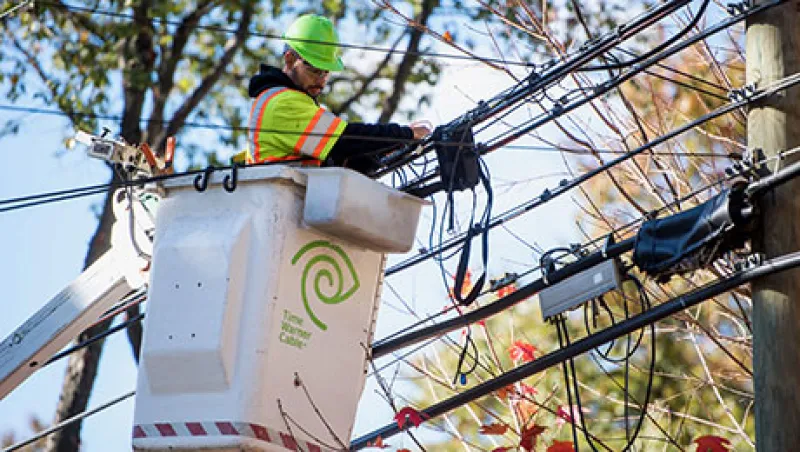ESPN isn’t the only sports network suffering from the new economics of pay television. Regional sports networks (RSNs) are taking it on the chin, as television service providers balk at high fees and viewers tired of ever-rising bills cut the cord on cable and satellite subscriptions.
“The situation is serious,” says Jimmy Schaeffler, an independent media consultant in Carmel-by-the-Sea, California. “RSNs need to be nervous. Things aren’t as rosy as they were five years ago — or even two years ago.”
RSNs’ hefty affiliate fees have led to conflicts with cable and satellite service providers. Since November, Philadelphia cable giant Comcast Corp. has kept YES Network, which broadcasts New York Yankees games, off the air for its viewers. Comcast and New York–based 21st Century Fox, which owns 80 percent of YES, are squabbling over payment terms. Although Comcast is fighting YES Network’s fees, other tristate area cable service providers, such as Cablevision and Time Warner Cable, are paying up.
Comcast serves Yankees fans in suburban New Jersey and Connecticut, whereas Time Warner Cable and Cablevision are more focused on New York City itself and parts of Long Island. Those two service providers may have acquiesced to YES’s user fees because they’re worried that their customers wouldn’t tolerate the absence of Yankees games, analysts say.
In Los Angeles, DirecTV and other service providers have refused to pay the price for SportsNet LA, the channel that shows Dodgers games and is owned by Time Warner Cable and the Dodgers. The dispute has kept the network off the air in more than 50 percent of cable- or satellite-subscribing households in the Los Angeles market.
YES is the most expensive RSN in the country for carriers (see chart), with an average monthly charge of $5.36 per subscriber, and SportsNet LA places second, at $4.59, according to media and communications analysis firm SNL Kagan. ESPN charges $7.24, the highest of any television network, regional or otherwise.
Not all RSNs are suffering. “There are haves and have-nots,” says David Sternberg, an independent media consultant in Westport, Connecticut. The successful ones are generally controlled by the dominant cable or satellite provider in the area or broadcast games of very successful teams. Comcast SportsNet Bay Area carries the 2015 NBA Championship Golden State Warriors and the 2014 World Series winner San Francisco Giants, whereas Fox Sports Kansas City broadcasts the 2015 World Series champion Kansas City Royals.
Comcast owns eight RSNs. For those, the company doesn’t have to worry about paying affiliate fees to its own networks. AT&T, which owns satellite provider DirecTV, also owns four RSNs. The dominant owner of RSNs, however, is Rupert Murdoch’s 21st Century Fox, with 22.
To some extent, the RSNs are victims of their own success. For years, they have paid more and more to teams for programming rights and then passed the cost along to cable and satellite companies, which in turn pass the costs along to customers. Customers in mounting numbers responded by reducing or eliminating their pay-TV services and opting for online content instead. “The cord-cutting, cord-shaving and cord-nevering puts that model under threat now,” says Andrew Zimbalist, a sports economist at Smith College in Northampton, Massachusetts.
RSNs’ profit margins will probably get squeezed over time, as it becomes harder for them to implement price increases and cord-cutting continues, analysts say. Some RSNs already have lost money, including SportsNet LA, says Zimbalist.
And what is the impact of RSNs’ troubles on their corporate owners? “For Fox, the RSNs represent a significant amount of cash flow,” says Christopher Marangi, portfolio manager for GAMCO Investors in Rye, New York. “As a profit center, that’s probably not going to grow, but it remains valuable.” (Fox declined to provide RSN revenue data.) For companies such as Comcast and AT&T, of course, the effect is more mixed, with the networks being part of the companies’ own distribution system.
As for the future, RSNs will have to focus on digital platforms. “It’s a direct-to-consumer play going forward,” Sternberg says, as RSNs sell their content on the Internet. And, of course, RSNs will have to adapt their content for mobile phones. Many RSNs and other networks are already available on the Internet and through smartphone applications, but users have to be a cable or satellite subscriber to access them. “In the future you may be able to get it just like any other streaming service,” Sternberg says. An early example is Twitter’s deal to broadcast ten Thursday-night NFL games next season.
It’s not clear how beneficial the growth of digital platforms will be for RSNs, because it’s not clear who will control the platforms and what the revenue flows will be to them. “It could mean new competition or a new source of growth for the RSNs, depending on the sport or the team,” Marangi says.
Get more on corporations.







